Report Shows Parks Need More Equity
A nation-wide problem. In Milwaukee persons of color have access to 70% less park space.
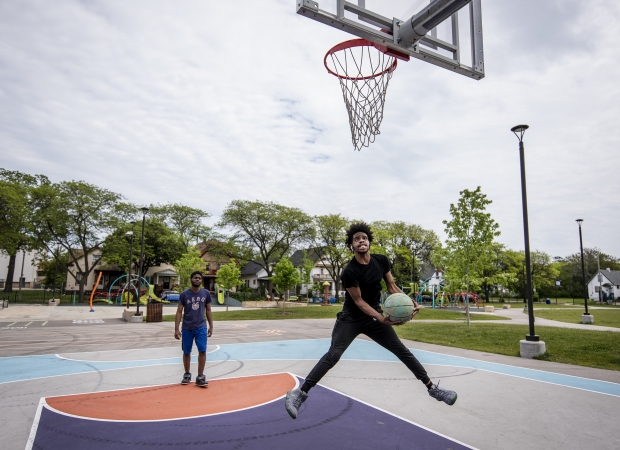
Milwaukee resident Myles Horton, right, plays basketball on a court at Columbia Playfield on Tuesday, May 25, 2021, in Milwaukee, Wis. Horton grew up playing at this park before it was renovated. Angela Major/WPR
A new national report shows more than 90 percent of residents in Madison and Milwaukee are only a 10-minute walk from a park, but both cities have less recreational space for people of color or those who are low income.
For the first time ever, The Trust for Public Land used racial and income equity as one of the factors used to rank park systems in the United States’ 100 largest cities.
Previously, rankings were based on four categories: acreage; investment; amenities; and access.
“How do we not just improve our park systems across the board but really look back at how we failed populations in the past and rectify that lack of investment?” Compton said.
Madison ranked 13th overall and received high marks for access and how much it spends on parks. However, Madison residents in low-income neighborhoods have access to 69 percent less park space than residents in high-income neighborhoods, the report found.
“We recognize we have important work to do as we continue moving forward in park equity for all,” said Madison Parks spokesperson Ann Shea.
Milwaukee, which ranked 34th overall, has also invested heavily in its parks. But the report states residents in neighborhoods where most people identify as a person of color have access to 70 percent less park space than residents who are white.
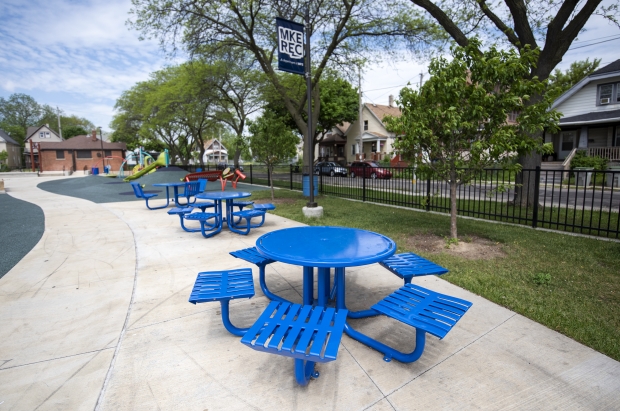
Picnic tables are located near playground equipment Tuesday, May 25, 2021, at Columbia Playfield in Milwaukee, Wis. Angela Major/WPR
Getting Parks In Shape
Between 40 percent and 60 percent of Milwaukee’s 52 so-called playfields were in fair to poor shape, according to a 2014 report done by an outside consultant. Playfields are neighborhood parks rather than parks on school property.
The report lead to an equity-driven plan for upgrades to parks across the city, said Lynn Greb, director of Milwaukee Recreation. The department took into account neighborhood characteristics such as race, income, poverty and crime rate, along with the condition of the park.
So far, five playfields have been renovated and two more are under construction.
Greb recalls how Southgate Playfield, located on Milwaukee’s south side in the Southgate neighborhood, looked before its renovation was completed in August — and why few people used it.
“The whole site was asphalt,” she said. “The play structure had been set on fire at one point, it was in terrible shape. The basketball rims were gone and there were no trees.”
Now, there’s green space, a playground, basketball courts and a splash pad.
The renovation began in 2019 and was the first “major” investment to the space since the 1950s, when it was paved with asphalt, according to the city.
“The place is bustling with activity,” Greb said.
One sure sign the newly updated parks are getting use is trash pickup, which has “quadrupled” prior to what it was before the upgrade, she said.
The Trust for Public Land says communities need parks with adequate green space to provide a buffer to climate change. Less concrete means better absorption of floodwater and trees provide shade. There’s also evidence access to green space can improve health by reducing stress, obesity and depression.
Listen to the WPR report here.
Parks For All: Report Looks At Outdoor Equity In Largest US Cities, Including Madison, Milwaukee was originally published by Wisconsin Public Radio.


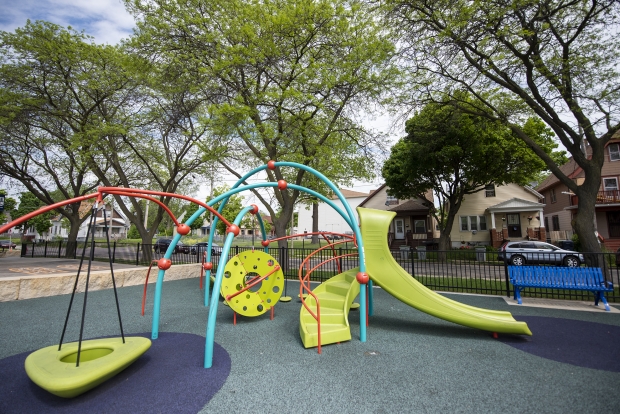
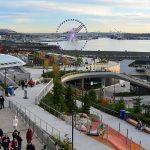

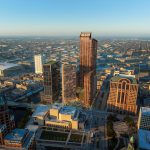
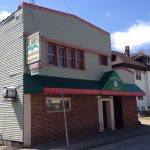
















Last summer, King Park, the closest Milwaukee County park to my residence in the Avenues West neighborhood, was the host to a tent camp of homeless people. I alerted my Milwaukee County Board of Supervisors representative, Supreme Moore-Omokunde at the time, but no action was taken.
Last summer was not the first summer where homeless encampments in King Park have been a problem. However, it was the largest group – about 12 tents, and it was the first time there was clearly some behind-the-scenes organizational support. All the tents were identical, and I observed food delivery to the encampment.
I understand that last summer there were extenuating circumstances. Covid-19 probably prevented shelters from taking-in some of the homeless population, and a tent camp made a lot of sense because it created bubbles of small groups separated by well-circulated fresh air.
I was not happy to find beer and alcohol bottles around the area, but I will say that county employees did a good job of keeping it under control. Nevertheless, I hope this summer there will not be a repeat performance. Vaccines are available, and King Park and the Avenues West neighborhood deserve better.